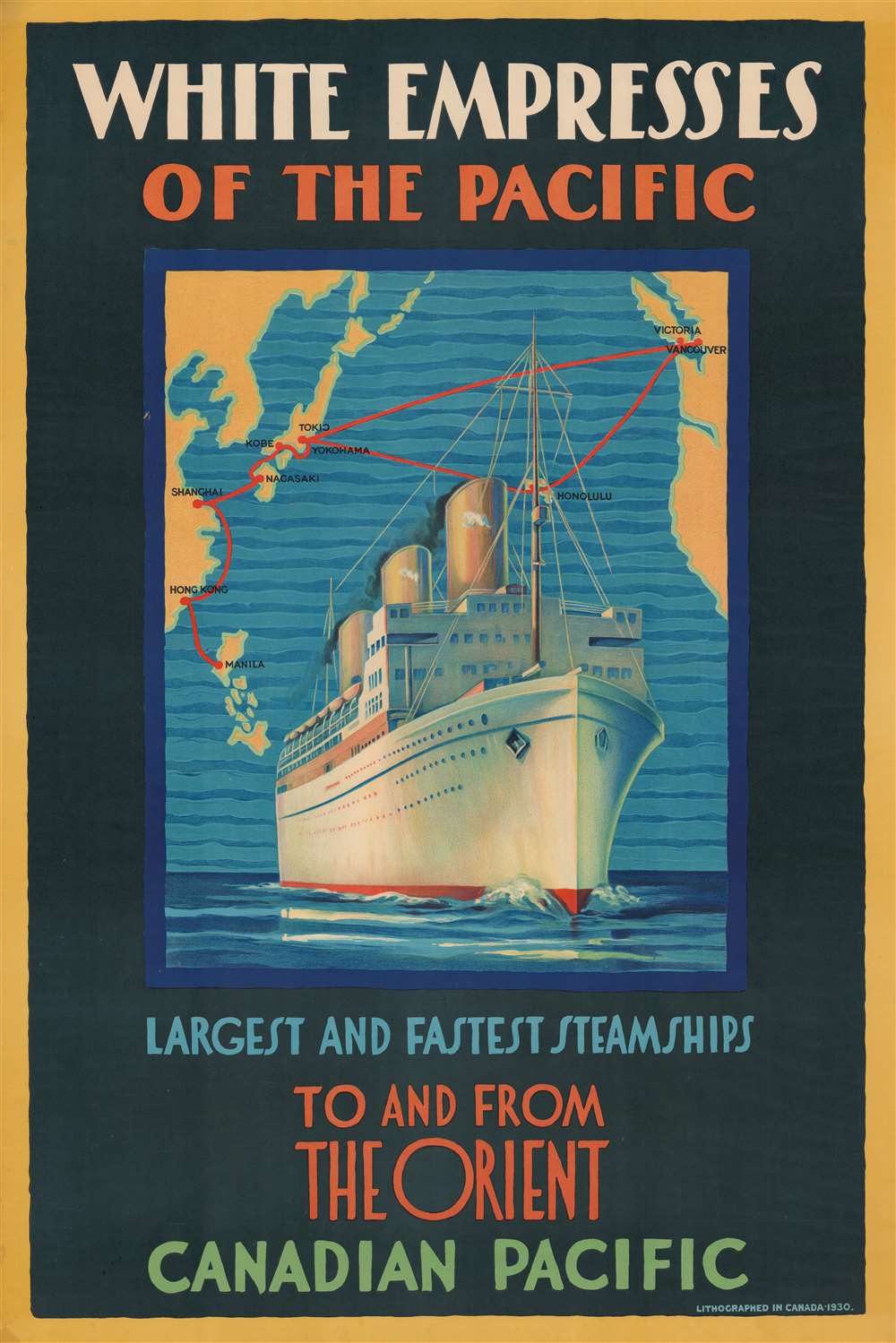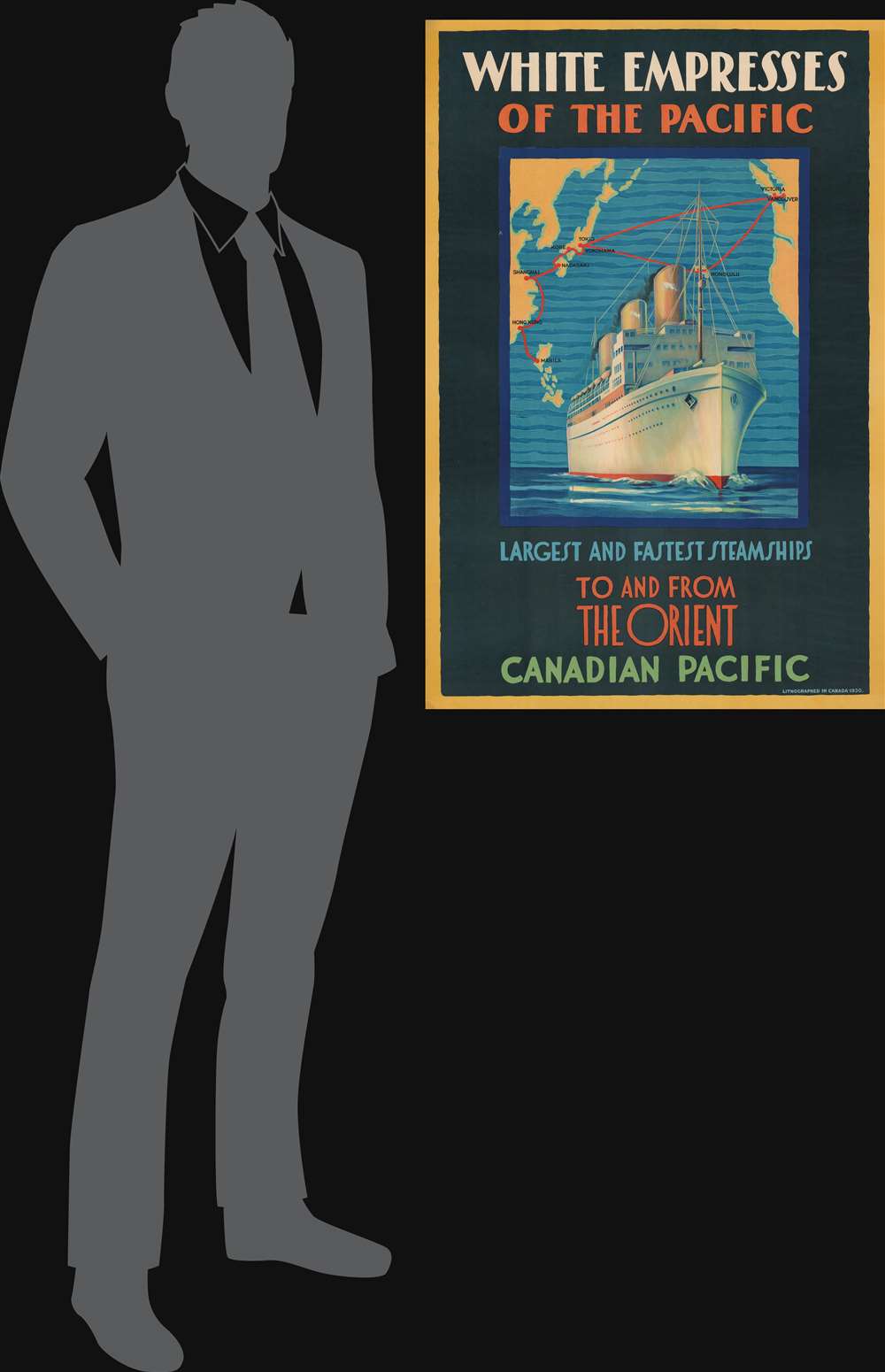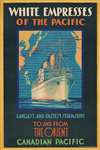1930 'White Empress' Steamship Promotional Poster Map of the Pacific
WhiteEmpress-canadianpacific-1930$1,500.00

Title
White Empresses of the Pacific. Largest and Fastest Steamships to and from the Orient Canadian Pacific.
1930 (dated) 36 x 24 in (91.44 x 60.96 cm)
1930 (dated) 36 x 24 in (91.44 x 60.96 cm)
Description
A striking 1930 chromolithograph travel poster map illustrating the routes of the Canadian Pacific White Empress line. The map illustrates the route between Vancouver, Honolulu, Tokyo, Kobe, Nagasaki, Shanghai, Hong Kong, and Manila. A massive three-stack steamship dominates the image - this is likely the Empress of Japan, which was inaugurated in the year this poster was published.
White Empress
White Empress refers to a fleet of three steamships run between Vancouver and the Far East by the Canadian Pacific Railroad. These included the Empress of Asia, Empress of Russia, and Empress of Japan. This last ship, the Empress of Japan, is most likely the ship represented here, as it was launched in 1930, the crown of the White Empress Asia Fleet and, at the time, the fastest ocean liner in the world. She was constructed in the shipyards of Govan on the Clyde, Scotland by Fairfield Shipbuilding and Engineering. The Empress of Japan served the trans-Pacific route until 1942, when she was recommissioned as the Empress of Scotland.Chromolithography
Chromolithography, sometimes called oleography, is a color lithographic technique developed in the mid-19th century. The process involved using multiple lithographic stones, one for each color, to yield a rich composite effect. Oftentimes, the process would start with a black basecoat upon which subsequent colors were layered. Some chromolithographs used 30 or more separate lithographic stones to achieve the desired product. Chromolithograph color could also be effectively blended for even more dramatic results. The process became extremely popular in the late 19th and early 20th centuries when it emerged as the dominant method of color printing. The vivid color chromolithography produced made it exceptionally effective for advertising and propaganda imagery.Publication History and Census
This poster was published in 1930 by the Canadian Pacific. No artist is known. We see an example at Swann (2022) that sold for 1250 USD and at Heritage (2014) that fetched roughly 1800 USD. We note an example at the University of British Columbia, but no other institutional holdings. Not in OCLC. Rare.Condition
Very good.
References
University of British Columbia,
CC_OS_00238.




